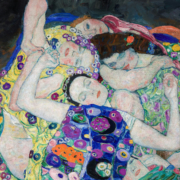From Jung to Bion: an infinite bridge
Abstract
Jung’s thought has underground and profoundly influenced Bion’s work. Ostracized by the mainstream of the more traditional psychoanalytic discourse, the creativity of Jungian research has forcefully re-emerged in Bion’s thought in his revolution of psychoanalytic theory and technique. The Jungian transcendent function, the synergy of conscious and unconscious, has become in Bion’s “binocularity” of the mind: the search for synchronicity between conscious and unconscious processes. Jung’s collective unconscious has merged into the conception of a substantially groupal and intersubjective “protomental”. Jung’s emphasis on waking visions allowed Bion to consider how our mind dreams night and day, both in sleep Read more


